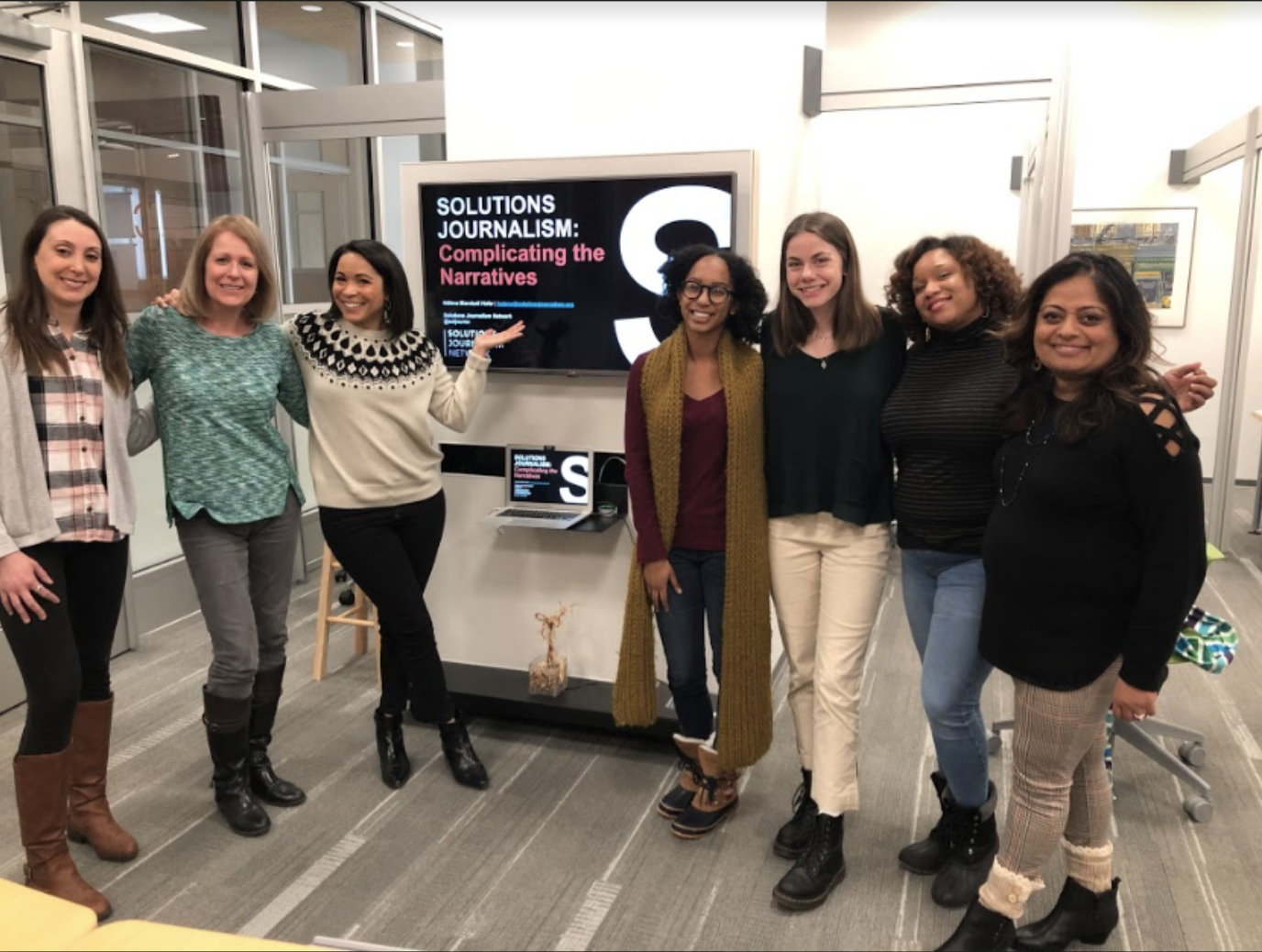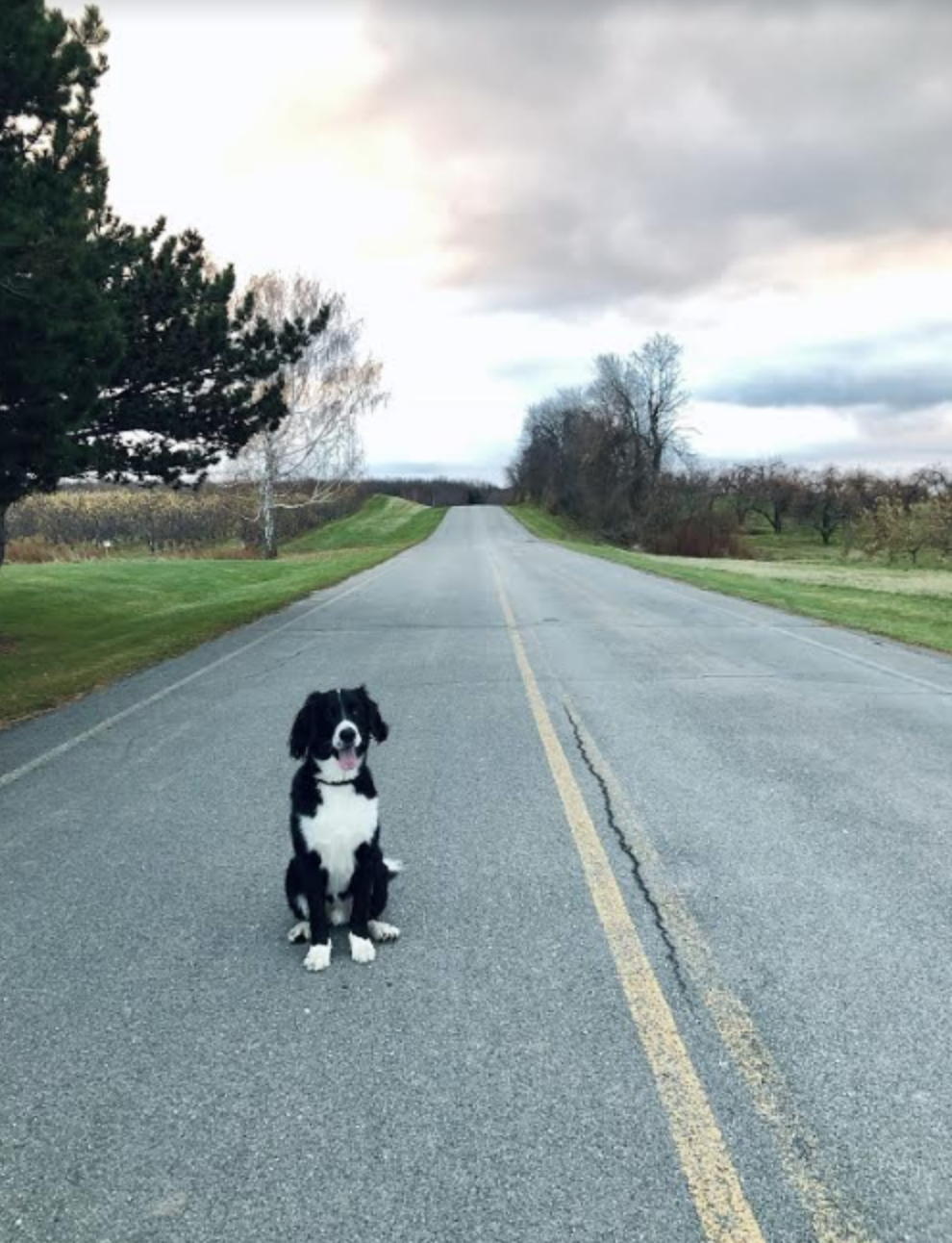Covering Controversy Without Making It Worse
The author as a child with her family. Photo courtesy of Hélène Biandudi Hofer.
Small towns never liked me. In return, I loathed small towns.
In cities where I’ve lived — New York, Washington — I feel a sense of acceptance, and an appreciation for diversity and individuality. When I travel, I visit places like Los Angeles, San Francisco, Tampa, Toronto, London, Rome. In cities, I see people who look like me.
That was never my experience in small towns.
During my childhood trips to my mom’s South Dakota birthplace, the local townspeople stared at, and sometimes glared at, our biracial family.
My father’s mocha-rich skin coupled with my mom’s pearl-like hue made some downright angry. Add to the mix my parents’ carefree Black biracial son and daughter and you might as well grab some buttered popcorn and pull up a chair.
There was the time I broke my hand in a bicycling accident in Green Lake, Wisconsin, and a gas station clerk intentionally gave my father inaccurate directions to the local hospital. The time my family was followed by a pickup truck with two guys shouting obscenities out the window. The time, or should I say times, my family and friends were refused service at restaurants, or deliberately seated last.
Years later, in my career as a journalist in Western New York, when I had to cover a news story that brought me to a small town, I spent as little time there as possible, completing as much reporting as I could in advance.
I knew there must be towns and villages in America that were diverse in race, politics and thought. Some may even have celebrated diversity. I had never encountered these places — to me it wasn’t worth the risk to go looking.
The author as a child with her family. Photo courtesy of Hélène Biandudi Hofer.
Then came the day when my family was invited to a cookout and housewarming — in a small town. My husband said we could not turn it down. I clearly remember his words when I insisted we decline: “We can’t not go, Hélène, they specifically asked that you come.”
On the day of the cookout I gave myself at least four pep talks. I had to prepare myself for the uncomfortable lingering stares. Or worse, feeling invisible and ostracized for hours. I did a heck of a lot of praying, right up until I walked through the front door.
Before my fears had a chance to materialize, someone asked me to join a small group taking a tour of the home. I was welcomed immediately.
For the next few hours, over burgers and pasta salad, I found myself talking with a handful of guests, all residents of this small town, about everything from politics and the state of the news media to home decorating. I was actually enjoying myself.
I didn’t always agree with their viewpoints, but I was intrigued by their perspectives and how they had come to their beliefs.
I felt a sense of ease and confidence in navigating those conversations, I think at least in part because there was something different about how I approached them. I was less interested in making my case and fending off attack and more focused on listening.
During that cookout, I felt my small-town biases and fears being replaced with curiosity. People I had long dismissed as one-dimensional I now saw as multilayered and complex. I was drawn to their stories.
That breakthrough occurred because of the conversations I had that night. And I was able to have those conversations because of what I’d recently learned in the work I was doing each day.
Changing the way journalists report on controversial issues
That work is called Complicating the Narratives, or CTN. A training program of the same name, inspired by research and a moving essay by journalist and writer Amanda Ripley, officially launched in 2019.
Complicating the Narratives teaches reporters, editors, hosts and producers more effective ways to report on polarizing and contentious issues in our society. Its strategies and techniques have long been used by experts in conflict resolution, including mediators, psychologists and even hostage negotiators. A primary goal of CTN is to help reporters produce journalism on complex topics that generates curiosity and understanding without causing further divides.
We believe Complicating the Narratives is essential for our polarized times. It creates a path for journalists to get to the depths of an issue rather than getting stuck in the noise and chaos of the moment. When it’s all too easy to resort to simplified “he said, she said” reporting and “us vs. them” narratives, CTN illuminates a problem (or a solution to an issue) in a way that makes the conflict more comprehensible to those who rely on our coverage. This approach can help us better understand ourselves and one another in our complex world.
Complicating the Narratives is based on four pillars that help journalists:
• Listen differently, in a way that challenges us to acknowledge our preconceived notions and biases and helps our sources feel heard and understood. We do this through the technique of “looping” developed by Gary Friedman and Jack Himmelstein of the Center for Understanding in Conflict.
• Go beneath the problem, by asking different types of questions that get to the core of a person’s beliefs, motivations or values. In this way, we avoid fixating on throwaway remarks or caricaturing seemingly rigid positions. Thoughtful interview questions create more accurate and nuanced portrayals.
• Embrace complexity and navigate the various layers and sides of an issue. When we go beyond the immediate facts and include historical or geographical context in our reporting, it helps generate a deeper understanding of a conflict and keeps our audiences curious.
• Counter confirmation bias in our audiences and ourselves. Research has made it clear that facts alone won’t get people to change their minds about an issue, nor is that our goal. However, carefully presenting data and convening people with different viewpoints can lead to new ways of processing and thinking about a controversial topic.
Journalists in Western New York pilot the Complicating the Narratives curriculum in January 2020 with the help of Hélène Biandudi Hofer, third from left.
Working with journalists in an unprecedented year
If you’re familiar with the Solutions Journalism Network, then you know it revels in experimentation. That’s one of the many things I love about the organization and the people with whom I work, and 2020 was a year of exploring and experimenting with Complicating the Narratives.
When COVID became a nightmarish reality, we pivoted from in-person trainings to virtual gatherings. And when the drumbeat for racial justice and equality became a rallying cry heard around the world, we identified the elements of CTN that were critical for that moment and quickly provided tools to help journalists report with integrity and authenticity.
Journalists participate in a June 2020 Complicating the Narratives webinar called Listening to Understand.
We trained journalists from more than 35 newsrooms, and our webinars reached reporters and media professionals across the globe.
Here’s how we’ve been moving Complicating the Narratives forward.
Relationship-building
Idea-sharing and learning from the insights of others have helped guide the development of CTN. Organizations like More in Common, Over Zero, and the National Institute for Civil Discourse have taught us about the perceptions, attitudes and experiences that drive polarization, as well as responses intended to mitigate division.
During deep conversations with reporters and editors, they’ve shared how they envision CTN working in their newsrooms. These conversations have shaped our planning, training and resource design.
Training and engagement
In early 2020 we piloted our Complicating the Narratives curriculum, which has evolved into a two-part, four-hour interactive training. Partner newsrooms trained in CTN and now experimenting with the approach include the Star Tribune in Minneapolis, WHYY in Philadelphia, KPCC in Southern California, Honolulu Civil Beat, The Arizona Republic, the Center for Public Integrity, and WAMU in Washington, D.C.
The shock, pain and confusion felt around the world after the deaths of George Floyd, Breonna Taylor, Ahmaud Arbery and too many other Americans of color required journalists to rethink their approach to and coverage of race and justice. The Solutions Journalism Network offered two webinars focused on deep listening. We wanted to equip journalists with an interviewing practice from CTN that involves listening to sources and asking questions in a way that builds trust while also uncovering motivations, hopes and fears.
Prior to our historic presidential election, we gathered journalists practicing Complicating the Narratives and organizations leading efforts to bridge divides through journalism for a special webinar billed as an antidote to the same old election coverage. Participants heard insights and tips from reporters practicing Complicating the Narratives.
We also supported news organizations leading civic engagement events in their communities. In Laconia, New Hampshire, community members who had written letters to The Laconia Daily Sun were invited to join the paper’s staff for a virtual gathering. The goal was to promote healthier civil discourse on its Op-Ed pages by creating a space for deep listening.
FunTimes Magazine in Philadelphia launched “The Diaspora Disconnect: Listening to Understand,” focused on bridging the cultural disconnect within the African diaspora — specifically between Black Americans and Black immigrants in the U.S.
FunTimes Magazine in Philadelphia launched “The Diaspora Disconnect: Listening to Understand.” The two-part event series focused on bridging the cultural disconnect within the African diaspora — specifically between Black Americans and Black immigrants in the U.S.
These newsroom-organized, community-based efforts are using Complicating the Narratives practices to bring people with disparate viewpoints together to explore shared challenges and possibilities. Our goal moving forward is to identify newsrooms initiating civic engagement projects with a similar mission for collaboration and support. (Let us know if that’s you!)
Reaction and feedback
Journalists trained in the Complicating the Narratives approach tell us they have applied it to good effect when reporting on potentially divisive issues, including the election, housing and homelessness, immigration, policing, schooling during COVID, issues of racial justice and climate change.
Of course, as with any new skill, becoming proficient with CTN takes time and practice. It requires reporters to engage in deep listening with sources, and to seek a historical or geographical lens on a particular issue in order to provide the needed context. It also requires support from editors.
This piece by journalist Amanda Ripley, published on SJN’s The Whole Story blog in June of 2018 was the impetus for the Complicating The Narratives initiative.
Feedback from journalists is promising, with reporters telling us it’s helping them identify their own biases, leading to deeper conversations with both colleagues and sources, and helping build trust with sources who feel they are more accurately represented in stories.
Smriti Jacob, managing editor and reporter for the Rochester Beacon, told us that this approach deepened her commitment to her work. “Complicating the Narratives made me realize that I was born to be a journalist,” she said. “It helped me find my ‘why.’ Now I’m more committed to this work than I’ve ever been.”
Where we go from here
Producing deeper, more inclusive stories on controversial and polarizing issues takes time and tenacity. But we believe it can also contribute to a healthier political debate and a stronger democracy.
The pan-European media organization, Are We Europe, used a Complicating the Narratives theme for an issue focused on the ongoing impact of colonialism.
At Solutions Journalism Network, we are continuing to develop and refine trainings and other resources in CTN, exploring the following questions:
What types of stories are being produced after a newsroom is trained in Complicating the Narratives?
Do audiences recognize when stories are being covered through a more nuanced lens?
How are audiences responding to these types of stories?
In what ways are these strategies and techniques being used by newsrooms for community engagement?
In measuring the impact and effectiveness of this practice, what changes, if any, will we need to make to our training curriculum?
What additional resources and support do journalists need to help actualize this type of reporting?
How you can start ‘complicating the narrative’ right now
There’s no time like the present to engage with Complicating the Narratives techniques and start applying them to your world.
If you’d like to learn how to have deeper conversations with your sources (or your parents, neighbors or friends), check out the first 30 minutes of our Listening to Understand webinar. You’ll get a step-by-step walk-through of the “looping” technique (aka deep listening).
When you’re done watching the webinar, call up a friend or colleague and practice, practice, practice! We compiled a list of conversation-starter questions you can use to get the discussion rolling.
Another option is to role-play with a friend. Give them the background information on a source you’ll be interviewing and ask them to play that role. After the role-playing, ask yourself: How did the looping interview differ from how I thought the conversation might evolve? What was it like to focus on staying in the present and following up with “tell more more,” rather than immediately resorting to my list of questions? How did my friend/source feel about the interview?
If your newsroom is interested in a specialized training, please reach out to me (helene@solutionsjournalism.org).
A closing note
Not long after that fateful cookout, my husband and I decided to move to a town in Western New York with a population of 700 — a move that would have been unthinkable for me before I started my CTN work.
The author and her husband in their new home in a small town. Photo courtesy of Hélène Biandudi Hofer.
Our neighbors are warm and kind. From bottles of wine and fresh-baked chocolate chip cookies, to home-grown vegetables and the contact info for a reliable local contractor, they have showered us with more hospitality than I could have imagined.
We’ve now been in our new town for nine months, and I’m happy to report that I love it even more today than I did when we first moved in. I might be the only person of color living here (though I’m actively trying to recruit friends to check out local real estate) and although the sprinkling of Confederate flags in neighboring towns keeps me cautiously curious (and sometimes on edge), this feels like home.
The most surprising thing I have discovered is the diversity of thought and life experiences. I’m surrounded by educators, writers, engineers, former military personnel, counselors and farmers.
With each interaction, I am reminded of how my work with the Solutions Journalism Network and Complicating the Narratives has helped me overcome my own small-town biases and embrace a new way of living that has enriched my life.
Russell, the family dog, is enjoying small-town life, too. Photo courtesy of Hélène Biandudi Hofer.









